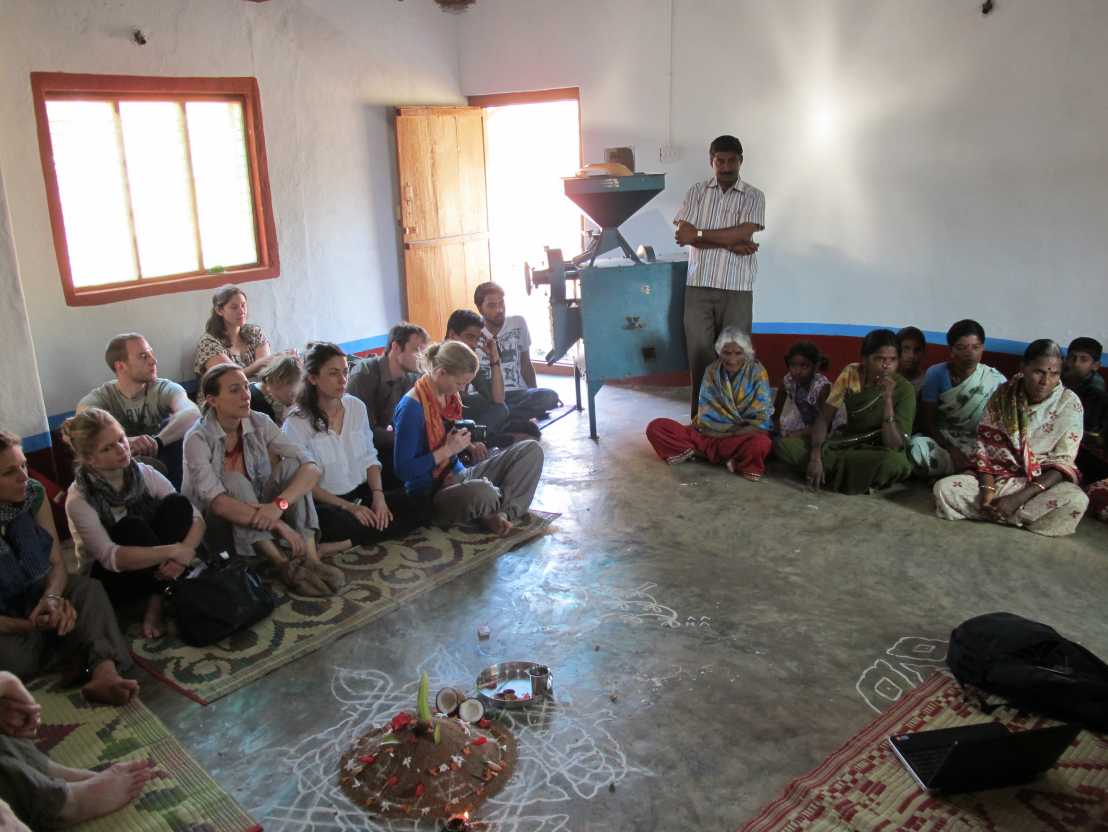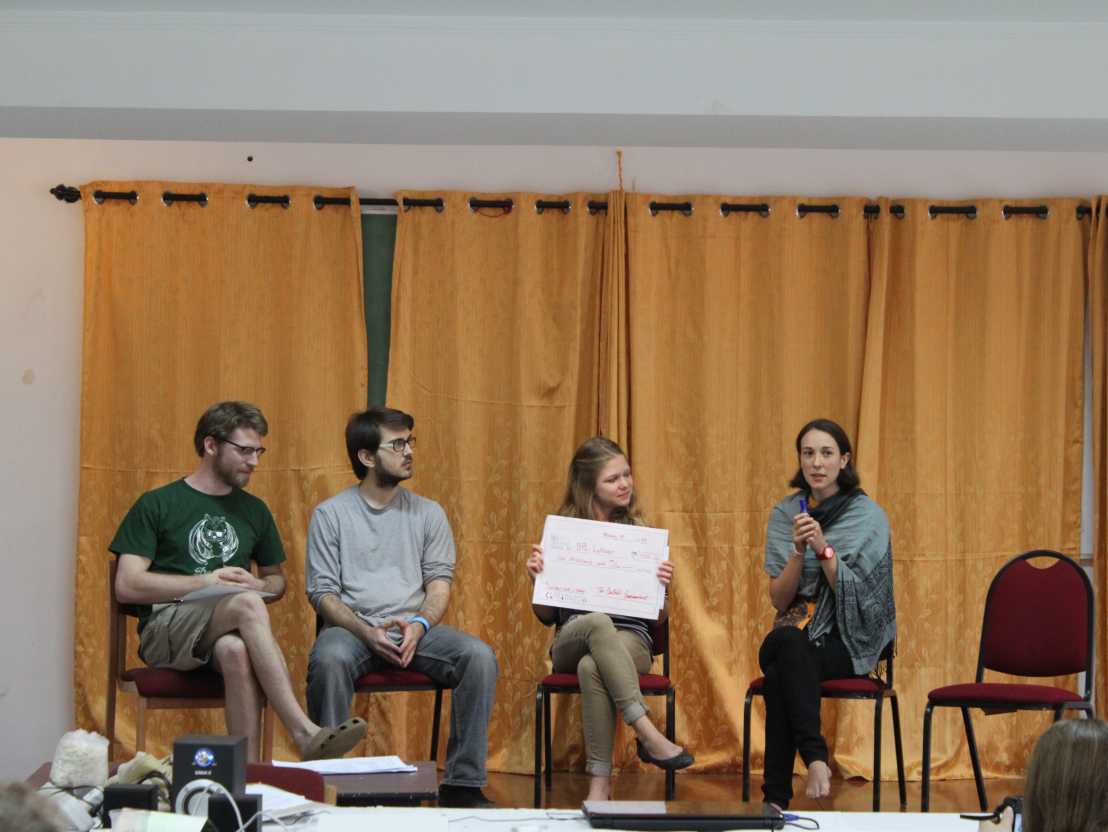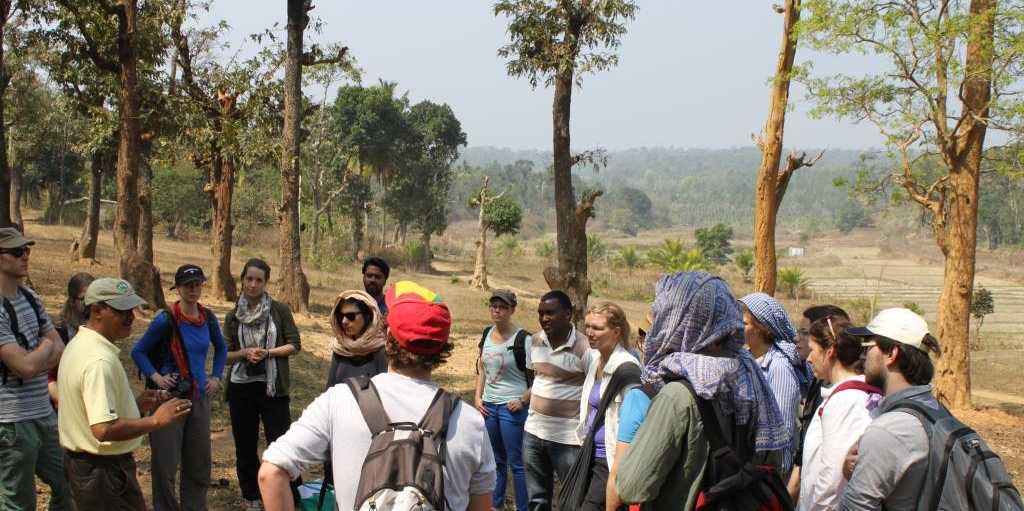Feeding India - An Educational Journey
In February the ETH World Food System Center embarked on a study tour of India with a group of students from around the world. The group was not only hungry for adventure, but also hungry for answers: How could India feed a growing population, in the face of challenges of poverty and environmental change?
The journey began in Coorg, in the Western Ghats, a biodiversity hotspot renowned for its coffee agroforestry systems, where coffee is grown under the shade of different tree species. The complex social, environmental and economic dynamics in the area gave students insight into how government or market incentives influence farmers in their decision of what to grow and how. We saw how researchers and conservationists were working to provide incentives to support biodiverse production systems, for example through specialty labeling and certification programs like organic and fair trade. Despite these efforts, it appeared that many growers were moving towards more intensified production of coffee, with reduced and less diverse shade cover, and away from the production of staple food crops, such as rice.
‘Organic’ and ‘fair trade’ labels are no silver bullet

For the course participants it was a unique opportunity to connect their morning cup of coffee to some very big questions, and realize that labeling and certification alone are not a silver bullet - even though they may make us as consumers feel a little bit better. We spoke with diverse groups of farmers and learned that even some of the wealthiest and most ideological growers are turning away from organic farming. This is largely because important ‘ingredients’ for organic agriculture, like labor and green manure, are in extreme shortage in this region. Also, certification programs are not reliably providing the farmers with price premiums they need to make organic production methods economically viable. At the same time, government subsidies and extension services promote the exact opposite: intensification, high value non-staple crops, and mechanization as strategies to cope with land fragmentation, stagnating prices and serious labor shortages in agriculture. (See also blog post by Jaboury Ghazoul: Who will be the future farmers?)
We then traveled from rural Coorg to Bangalore, a rapidly expanding metropolis and IT hub of India that is drawing young people from rural areas to the city. Here we further explored the food value chain, learning about processing, consumption trends, nutrition, health, poverty and development. Against this backdrop, the students worked in groups to consider the impacts of the recently enacted Indian Food Security Act. The Act guarantees to provide around two-thirds of the Indian population with subsidized rice, wheat and selected coarse grains, and is expected to become the largest welfare program in the world. The students analyzed the impact of the bill on sustainable agriculture and all stages of the value chain, and in particular the impacts on food and nutrition security, social welfare and environmental health.
Considering the big picture

The analysis raised many interesting questions about this large scale policy intervention, in particular: can subsidized staple crops really foster a resilient food system that guarantees a safe and nutritious diet, especially when the underlying causes, like poverty and inequality are not simultaneously addressed? The students explored ways that more resilient and sustainable production systems could be supported, for example through hybrid public-private partnerships to direct the means for organic farming and diverse production systems to those who need them. They also discussed opportunities for using e-Governance approaches to link the payment of benefits directly to the beneficiaries, thereby avoiding leaky government channels and supporting more diverse food consumption at the household level. Another topic was the inclusion of pulses and legumes in the subsidy program to help address problems that arise from simple diets based only on cereals that lack important macro and micronutrients for a healthy life.
Our group certainly did not have all the answers, but the case study highlighted the importance of taking a systems approach when designing policy interventions in order to avoid unintended consequences. As the participants leave their study programs and possibly move on to leadership roles in the food system, this experience will have a lasting positive impact on how they can make a positive contribution to large global challenges.
Further information
Learn more about the WFSC summer schools.

